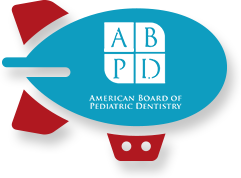Thumbsucking: Bad For Little Mouths?
August 14th, 2014

Not all children suck their thumbs or fingers and for those that do, it’s not always problematic. For some children, however, the thumb sucking habit can be a hard one to break. This can have a negative impact on growing mouths and developing teeth, causing the front teeth to push forward over time. According the American Academy of Pediatric Dentistry, thumbsucking is generally not a concern until after the age of 4. By that time, most thumb and finger sucking habits have long since ceased.
If your child is a thumb or finger sucker past the age of 4, it’s important to understand why he/she is engaging in the behavior. The urge to root and suckle is an essential impulse for newborns, who depend on those instincts for food. As babies mature, some continue to find comfort through sucking behaviors and as they grow, that urge becomes more habitual than essential.
For some children, thumbsucking is an absent-minded habit not unlike fingernail biting, hair chewing or rolling a favorite blanket between the fingers. For those kids, giving gentle reminders when you observe the behavior can be enough to help them break the habit.
For others, the behavior can be an attempt to self-soothe when feeling anxious, scared or tired. For those children, the sucking behavior is more than simply a habit and changing the behavior should be handled carefully and conscientiously. It’s important to keep in mind that a child that is sucking on his/her fingers for comfort is not necessarily misbehaving, so be sure to offer encouragement and support instead of negative reinforcement.
If you think your child is sucking his/her fingers and thumb out of anxiety or when fearful, it’s important that you try to identify what is triggering that response. Once you know what those triggers are, you can move to reassure your child before, during and after those experiences. Perhaps offer small rewards or incentives that are aimed at stopping the behavior.
If you are concerned that your child’s prolonged thumb or finger sucking is causing dental issues that need attention, we encourage you to reach out for an evaluation. Be sure to ask for tips or advice on breaking or redirecting the thumb or finger sucking habit. Sometimes, a simple, friendly chat with the dentist is enough to convince an older child to break the habit completely.
Remember, we are your allies in keeping your child’s teeth healthy.




